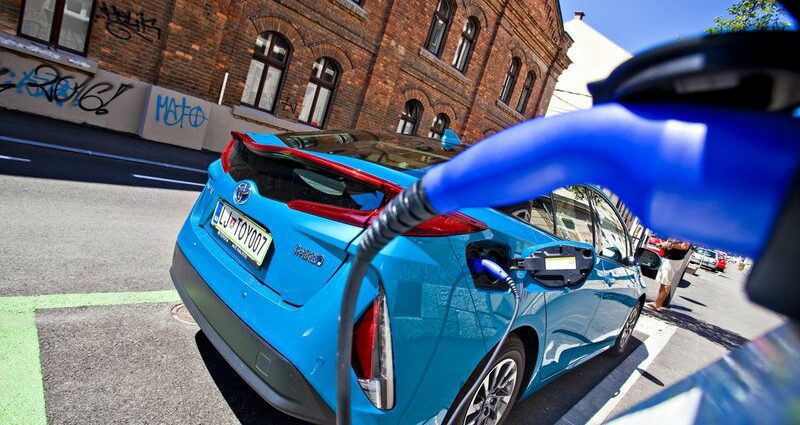
Release: Toyota Prius Plug-in Hybrid 1.8 VVT-i Sol
Content
Unlike the Toyota Prius hybrid, which is powered by a combination of a 1,8-liter Atkinson-cycle four-cylinder petrol engine, an electric motor and a nickel-metal hydride battery, the plug-in hybrid offers the same energy efficiency. The engine is gasoline, but instead of one, there are two electric motors, 31 and 71 hp. Both are powered by a lithium-ion battery and can run simultaneously and completely without the need for a gasoline engine, allowing the Prius plug-in hybrid car to run much more on electricity alone.
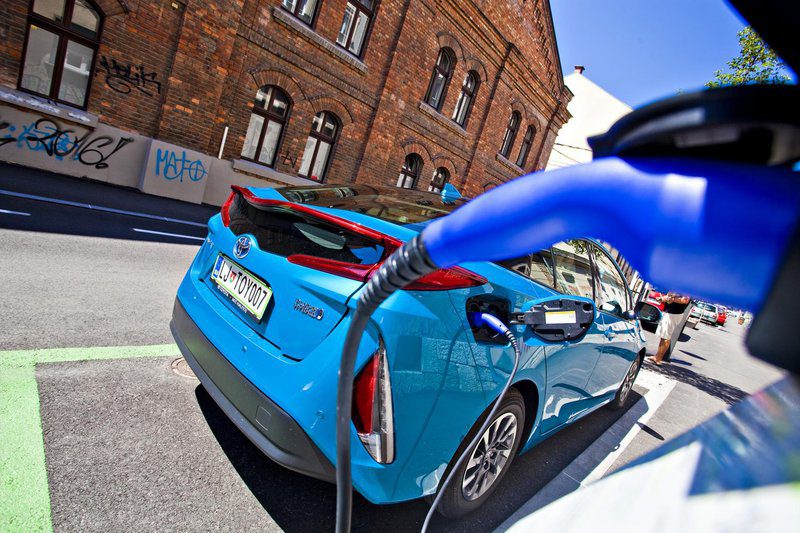
In a city like Ljubljana, it's no longer hard to find a free public EV charging station, so you can easily drive electricity with a plug-in hybrid Prius, even if you don't charge it at home. The battery charges to its full capacity of 8,8 kilowatt-hours in just over two hours, of which 6 kilowatt-hours are actually available for use and theoretically enough for 63 kilometers of electric driving (according to the NEDC cycle). For real-time travel, you don't really need to charge it to the brim, but short charges while doing chores are fine.
The increase in range is more noticeable if, for example, you travel to Ljubljana every day from satellite settlements. After a little more than two hours of charging the battery at the charging station "in the tram", when the car reported that there would be enough electricity for 58 kilometers, I headed through the center of Ljubljana towards Lithia and after a good 35 kilometers. with an automatic transmission, found that there was at least ten kilometers of electricity left. Indeed, the gasoline engine only started after 45 kilometers. If you're aiming for economical driving, the electric range is likely to be even greater, but even that's enough to be able to make most of your commute and city commutes on electricity alone, where there is time to drain the battery with sensible driving. And regenerative braking can significantly extend the operating time.
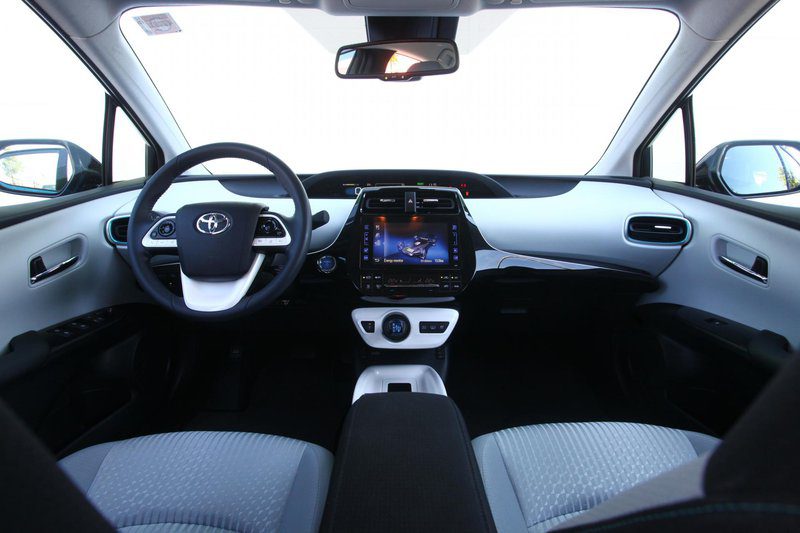
The drive system in the Toyota Prius plug-in hybrid is very supportive of the use of electric motors, so after just a few kilometers you'll find yourself driving surprisingly electric. If you run out of energy despite charging, you still have to charge the "mobile power station", the gasoline engine acting as a generator. You can use this, especially on long motorway trips, when the gasoline engine is running at high efficiency, and you can use the electricity generated in this way efficiently while you continue to drive around town.
Is driving a Toyota Prius plug-in hybrid more difficult than a hybrid? Not really. You have to get used to the fast addictive charging infrastructure, extra features, and an extra switch. In addition to switches for switching between hybrid modes and between electric and mobile charging modes, there is a third switch on the dashboard that activates EV City mode. This is more or less similar to the electric "EV" mode, but also offers the option to automatically turn on the petrol engine if more power is needed for quick acceleration. Otherwise, driving a Toyota Prius plug-in hybrid is basically the same as a hybrid and is no different from driving any other automatic vehicle.
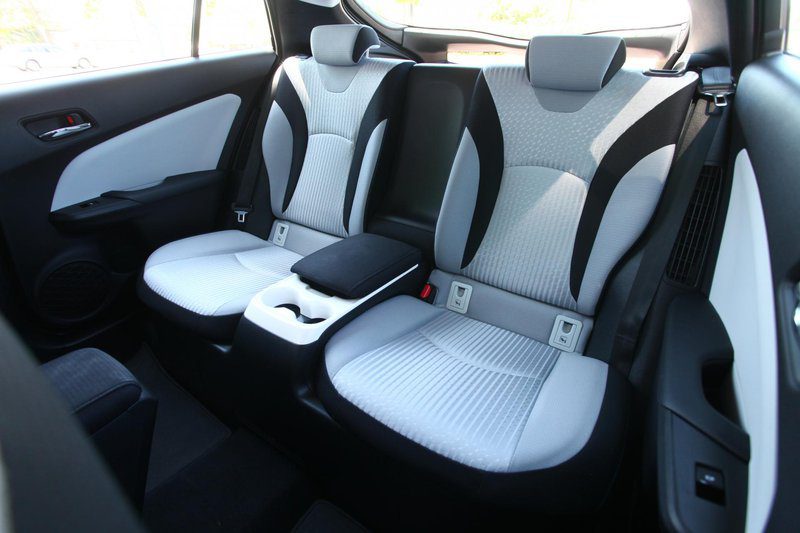
What about gas mileage? During a normal lap in the Eco hybrid mode, it was 3,5 liters per hundred kilometers and did not exceed four liters even in real conditions with high relative driving. This made it half a liter more economical than the hybrid Toyota Prius. If we drove a lot within the electric drive range, the gas mileage would of course be much lower or even zero. But in this case, you may rightly wonder if you really need a heavy hybrid supplement at all. For most day to day needs, an electric vehicle may suffice, which will of course also provide more powerful batteries and a longer range on electricity.
What about form? As sister vehicles, the Toyota Prius and Prius PHEV are basically the same shape, but are different enough to be distinguishable from each other. While the lines of the Prius are somewhat sharper and more vertical, the Prius PHEV is designed with softer, more horizontal lines, as well as more curved lines, which allowed the designers - to compensate for the heavier battery and drivetrain - to use carbon more extensively. - fiber reinforced plastic. Of course, the look of a Prius plug-in hybrid is basically the same as a hybrid: you might like it a lot, or you might not even care for it.
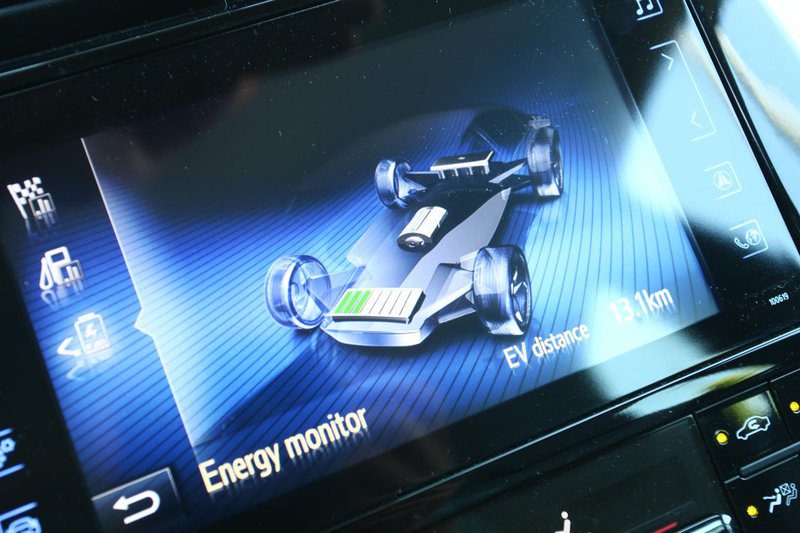
If the external appearance of the plug-in hybrid and the hybrid are easy to separate from each other, this is not the case for the internal parts, since they are almost identical. With a larger lithium-ion battery and electric charger, the trunk takes up a good 200 liters, charging cables also take up a bit of extra space, and there is an additional button on the dashboard. Toyota Prius PHEV is a spacious, comfortable and transparent car that you can get into completely quickly enough. It is the same with handling, driving performance and performance, with which it fully meets the requirements of competitors.
Should you buy a Toyota Prius plug-in hybrid? Definitely if you're flirting with a hybrid drivetrain. The price of a plug-in hybrid is much higher than a hybrid, but you can also save a lot of money if you drive sparingly and mostly on electricity. But if you've come as far as thinking about a plug-in hybrid, you should consider taking a step further and choosing an all-electric vehicle.
text: Matija Janezic · photo: Sasha Kapetanovich
More:
Toyota Prius 1.8 VVT Hybrid Sol
Hyundai Ioniq hibrid Impression
Kia Niro EX Champion Hybrid
Toyota C-HR 1.8 VVT-i hybrid C-HIC
Lexus CT 200h Grace
Toyota Auris station wagon sporty hybrid style
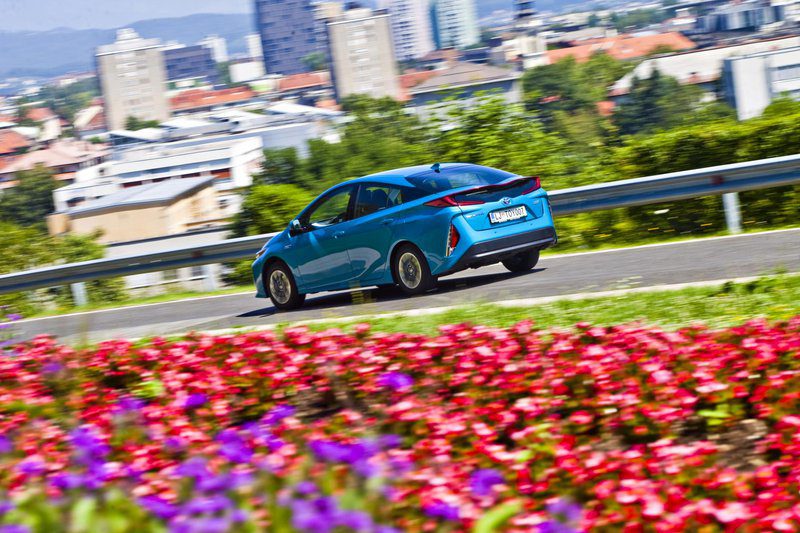
Toyota Prius Plug-in Hybrid 1.8 VVT-i Sol
Basic data
| Sales: | Toyota Adria Ltd. |
|---|---|
| Base model price: | 37,950 € |
| Test model cost: | 37,950 € |
| Power: | 90kW (122 KM) |
| Acceleration (0-100 km / h): | 11,1 with |
| Maximum speed: | 162 km / h |
| Mixed flow ECE: | 3,5l / 100km |
Cost (up to 100.000 km or five years)
| Regular services, works, materials: | 1,785 € |
|---|---|
| Fuel: | 4,396 € |
| Tires (1) | 684 € |
| Loss of value (within 5 years): | 10,713 € |
| Compulsory insurance: | 2,675 € |
| CASCO INSURANCE (+ B, K), AO, AO + | 6,525 ( |
| Calculate the cost of auto insurance | |
| Buy up | € 26,778 0,27 (km cost: XNUMX €) |
Technical information
| engine: | Engine: 4-cylinder - 4-stroke - in-line - petrol - transversely mounted in front - bore and stroke 80,5 × 88,3 mm - displacement 1.798 cm3 - compression ratio 13,04:1 - maximum power 72 kW (98 hp) at 5.200 rpm – average piston speed at maximum power 15,3 m/s – power density 40,0 kW/l (54,5 hp/l) – maximum torque 142 Nm at 3.600 rpm - 2 camshafts in the head (timing belt) - 4 valves per cylinder - fuel injection into the intake manifold. Motor 1: 72 kW (98 hp) maximum power, maximum torque n¬ ¬ Motor 2: 53 kW (72 hp) maximum power, np maximum torque System: 90 kW (122 hp) maximum power s.), maximum torque np Battery: Li-ion, 8,8 kWh |
|---|---|
| Energy transfer: | Drivetrain: engine drives front wheels - planetary gearbox - gear ratio np - 3,218 differential - rims 6,5 J × 15 - tires 195/65 R 15 H, rolling range 1,99 m. |
| Capacity: | Performance: Top speed 162 km/h - Acceleration 0-100 km/h 11,1 s - Top electric speed 135 km/h - Average combined fuel consumption (ECE) 1,0 l/100 km, CO2 emissions 22 g / km - electric range (ECE) 63 km, battery charging time 2,0 h (3,3 kW / 16 A). |
| Transportation and suspension: | Carriage and suspension: sedan - 5 doors, 5 seats - self-supporting body - front individual suspension, coil springs, three-spoke transverse rails, stabilizer - rear multi-link axle, coil springs, stabilizer - front disc brakes (forced cooling), rear disc, ABS, foot mechanical brake on the front wheels (pedal) - steering wheel with gear rack, electric power steering, 2,9 turns between extreme points. |
| Mass: | Weight: empty car 1.550 kg - allowed Gross weight 1.855 kg - Permissible trailer weight with brake: np, without brake: np - Permissible roof load: np |
| External dimensions: | External dimensions: length 4.645 mm - width 1.760 mm, with mirrors 2.080 mm - height 1.470 mm - wheelbase 2.700 mm - front track 1.530 mm - rear 1.540 mm - ground clearance 10,2 m. |
| Inner dimensions: | Internal dimensions: front longitudinal 860–1.110 mm, rear 630–880 mm – front width 1.450 mm, rear 1.440 mm – head height front 900–970 mm, rear 900 mm – seat length front 500 mm, rear 490 mm – trunk . 360 -1.204 l - handlebar diameter 365 mm - fuel tank 43 l. |
Our measurements
| Measurement conditions: T = 22 ° C / p = 1.028 mbar / rel. vl. = 55% / Tires: Toyo Nano Energy 195/65 R 15 H / Odometer status: 8.027 km | |
| Acceleration 0-100km: | 11,8s |
|---|---|
| 402m from the city: | 18,1 years ( 126 km / h) |
| Maximum speed: | 162km / h |
| test consumption: | 4,0 l / 100km |
| Fuel consumption according to the standard scheme: | 3,5 l / 100km |
| Braking distance at 130 km / h: | 65,9m |
| Braking distance at 100 km / h: | 39,7m |
| AM table: | 40m |
Overall rating (324/420)
The Toyota Prius Hybrid has expanded the capabilities of the Prius Hybrid as much as possible.
effortlessly, you use it almost like a real electric car.Exterior (14/15)
You may or may not like the shape, but next to it you will not remain indifferent. Designers
they tried to make the Prius plug-in hybrid different from the hybrid, because they
the shapes are much smoother.Interior (99/140)
The trunk is smaller than the Prius Hybrid, thanks to the larger battery, and is comfortable to sit here.
The rear is also sufficient, and the equipment is also quite extensive.Engine, transmission (58
/ 40)The plug-in hybrid powertrain is very efficient and requires a lot of energy,
especially if you charge your batteries regularly.Driving performance (58
/ 95)The ride quality matches the looks, so they will also like the more dynamic character.
hiring driver.Performance (26/35)
For both electricity and combined drive, the Prius Plug-in Hybrid is good enough.
powerful, so you don't feel a lack of power in your day-to-day driving.Security (41/45)
The Toyota Prius hybrid won five stars in EuroNCAP test crashes, which is real.
we also translate it into a connection option, and there are also a sufficient number of protections.Economy (46/50)
The price is higher than the hybrid version, but the cost of driving can be quite high.
below, especially if we charge the batteries at free charging stations and go on electricity.
We praise and reproach
unique design and transparent and spacious passenger cabin
driving and driving
actuator assembly and electrical range
many will not like the form
inconvenient handling of charging cables, but the same as with other trailers
limited trunk
